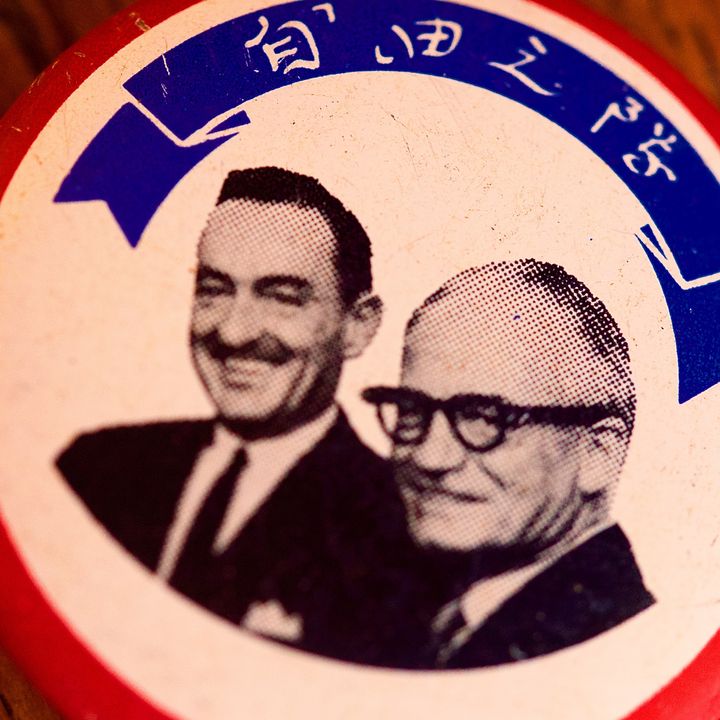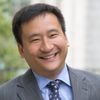
“My mother never told me I could be President.” That was the opening line to an article I wrote in 1996 for A. magazine, an Asian American periodical that was flourishing in that bygone era pre-dating the internet. I’m not sure many Asian immigrant parents would say anything different nowadays or that they would be disappointed by the conclusion. But Asian Americans have arrived, if reports are to be believed.
Notwithstanding setbacks such as the recent O’Reilly Factor show mocking Chinatown residents with every derogatory image you could come up with, Asian Americans are the subject of curious coverage in the popular media. Asian American political involvement, like the Asian presence in America, dates back much further than most people, including the latest Asian immigrants, realize. Family associations, the predecessors to non-profit groups, and conferences more than a century ago belie the notion of Asian Americans as apathetic. They advocated for their rights and litigated even if they thought they would lose.
Asian American civic engagement includes Chinese immigrants fighting on both sides in the Civil War, for example — yes, the conflict dividing the Union and Confederacy from 1861 and 1865. If you don’t believe it, a recent book from no less than the federal government offers details of their role in those bloody battles.
In modern elections, Asian Americans have been sought after by both major political parties. Now, as the fastest-growing demographic group, we have the potential as a bloc vote to matter in swing states.
However, the outreach to Asian Americans is not new. For more than two generations, we have been recognized, if only as a novelty or nuisance.
The story has not been told thoroughly. Here is an outline. (Try as I might, I have not been able to trace the backstory of 1964. Somebody must have decided it was worthwhile to drum up support among Chinese Americans: who? why? how? It was done for multiple languages, using the same freedom theme; there also was a Spanish language “up” with Goldwater pitch.)
In 1964, the Republican Convention was held in San Francisco. The Grand Old Party nominated Barry Goldwater.
The Senator from Arizona characterized himself as having the conscience of a conservative before anyone thought to declare themselves a neo-conservative. Although he lost resoundingly in the general election, done in by the prospect that he would initiate nuclear war (watch the precedent-setting “Daisy” ad), he was the harbinger of the taxpayer revolt that would prevail.
As a collector of Asian American memorabilia, among my favorite finds is a Goldwater campaign button. The banner around the perimeter proclaimed the title of “Freedom Team” for Goldwater and his running mate. Consistent with the candidate’s staunch anti-Communism, they were appealing to Chinese voters they assumed would be aligned with the KMT government on Taiwan versus the Communist government on the mainland. (An earlier “I Like Ike” button in Chinese, for Eisenhower, probably is the earliest example of a play for this ethnicity within the electorate.)
No doubt the setting by the Bay, in a metropolis that had had a significant Asian population since it was settled, suggested a gesture should be made. Delegates to the gathering also were given coupons for a free rickshaw ride. (I just ordered one online after being beat out in an earlier auction: it shows a transliteration of Gold and Water into Chinese characters, against a red background.)
In 1984, the Democratic Convention came back to San Francisco. New York Governor Mario Cuomo was the keynote speaker; former Vice-President Walter Mondale was the nominee; and Congresswoman Geraldine Ferraro was selected as his running mate.
The ticket was defeated by the incumbent, Ronald Reagan, who was heir to Goldwater. It is best remembered, and likely will be memorialized, for the gender first of a female being put forward as potentially next-in-line for commander-in-chief.
In talking to Asian Americans friends who were there, such as Linda Tsao Yang (later an Ambassador) and Marina Hsieh (soon to be a public interest lawyer), I learned how much they agitated for inclusion. A handful who had the credentials to participate tried, as other stakeholders of course were doing, to affect the drafting of the platform. They wanted Asian Americans to be accepted as racial minorities, with acknowledgment of their particular problems. Their caucus submitted proposals and testified about equality and fairness, and they felt their voices were heard.
Cuomo was not the only orator who attracted acclaim. Jesse Jackson delivered a major address. His Rainbow Coalition included Asian Americans. He said, alluding to the Vincent Chin murder that was still in the courts, that Asian Americans were "now being killed in our streets, scapegoats for the failures of corporate, industrial and economic policies."
There was considerable change in twenty years, between the parties. It was related to demographic transformations. The 1965 immigration policy reforms opened the doors for Asians who had been barred until then. Refugees after the fall of Saigon were already resettled everywhere from Orange County, California, to the Twin Cities.
From 1964 to 1984, the Republicans and the Democrats, the strategy had been altered in two respects. Asian Americans themselves had evolved.
First, pan-Asian identity was forming. Instead of Chinese and Japanese, collectively called by the name “Oriental,” connoting exoticism, there were Asian Americans. The umbrella term had been invented after the Summer of Love (1967), when a Yellow Power movement had sprung up at San Francisco State University, uniting young sansei, the third-generation Japanese Americans; with Chinese Americans, broken out of the box of Chinatown; and Filipino Americans, proud that they had come from what could no longer be called a colony. Goldwater wanted to win over Chinese, and, even more specifically, those who favored Taiwan. Mondale et al. were looking to the next generation, where affinities brought together those whose grandparents would have fought one another.
Second, a distinctively American identity was emerging. The issues of concern were not limited to so-called “homeland” politics but encompassed domestic civil rights. Asian Americans were insisting they were real Americans, here to stay, equals who represent themselves. They were not only pulling tourists through Chinatown. They were asserting themselves, like the Irish and blacks who preceded them and seemed to hold priority.
In 2016, there remain no Asian Americans who could be contenders for the White House. But there are Asian American governors, Senators, federal judges, Cabinet members, behind-the-scenes advisors, fundraisers, and commentators.
Yet greater possibilities are ahead. Asian Americans are no longer perceived of as a corrupting, foreign influence.
We are citizens, even leaders. By the next time a major party convention returns to San Francisco, an Asian American will be a contender.
